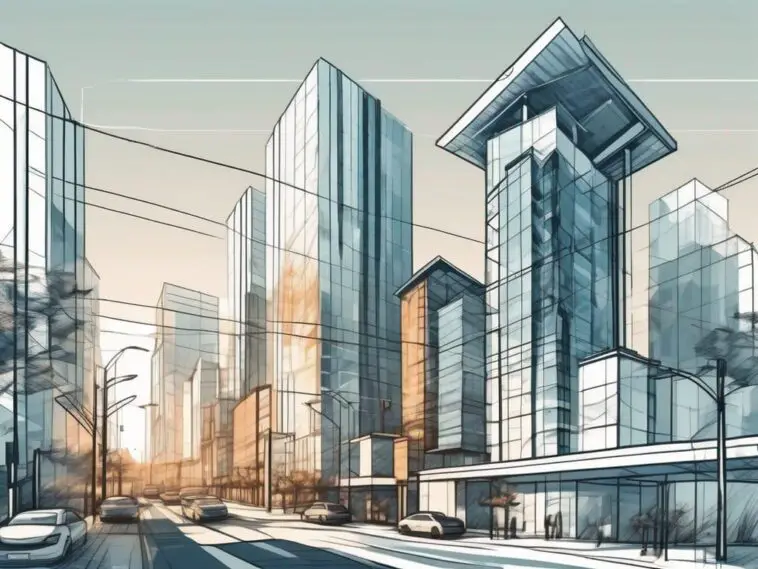The ever-evolving landscape of real estate and architecture is a fascinating study of trends, innovation, and market dynamics. This intersection of disciplines shapes our cities, influences our lifestyles, and impacts our investment strategies. Understanding this intricate relationship can provide valuable insights for architects, real estate developers, investors, and homeowners alike.
Understanding the Connection Between Architecture and Real Estate
Architecture and real estate are two sides of the same coin. Architecture is the art and science of designing buildings and spaces, while real estate is the business of buying, selling, and leasing these structures and the land they occupy. The two fields are intertwined, with architectural trends often driving real estate market trends and vice versa.
For instance, the rise of sustainable architecture has led to an increased demand for green buildings in the real estate market. Similarly, the real estate industry’s focus on maximizing space utilization has influenced architectural designs, leading to the popularity of open-plan layouts and multi-use spaces.
The Influence of Architecture on Real Estate
Architecture plays a significant role in shaping real estate trends. The design of a building can significantly impact its market value, appeal to potential buyers or tenants, and overall profitability. For example, buildings designed with energy efficiency in mind can command higher prices due to lower operating costs and increased appeal to environmentally conscious consumers.
Additionally, architectural innovation can create new real estate opportunities. The advent of skyscraper technology, for instance, revolutionized urban real estate by enabling the construction of high-rise buildings in densely populated areas.
The Impact of Real Estate Trends on Architecture
Conversely, real estate trends can also influence architectural design. Market demand for certain types of properties can drive architects to specialize in designing those types of buildings. For example, the recent trend towards remote work has led to an increased demand for homes with dedicated office spaces, influencing residential architecture.
Moreover, real estate development strategies can shape architectural practices. Developers seeking to maximize their return on investment may favor designs that optimize space utilization, leading to the rise of compact, efficient layouts in both residential and commercial architecture.

Key Housing Trends at the Intersection of Architecture and Real Estate
Several key trends are currently shaping the intersection of architecture and real estate. If you want to know more about real estate and how to obtain your real estate license in New York you can check this 6-step guide to help you get a better understanding of real estate. These trends reflect shifts in consumer preferences, technological advancements, and changes in societal norms and values.
Sustainable Architecture and Green Real Estate
One of the most significant trends is the rise of sustainable architecture and green real estate. This trend is driven by increasing awareness of environmental issues and a growing demand for energy-efficient, eco-friendly buildings. Green buildings not only reduce environmental impact but also offer cost savings in the form of lower energy bills, making them attractive to both buyers and renters.
Architects are responding to this trend by incorporating sustainable design principles into their work, such as using renewable materials, optimizing natural light, and integrating renewable energy systems. Meanwhile, real estate developers and investors are increasingly recognizing the value of green buildings and are seeking to incorporate sustainability into their portfolios.
Smart Homes and Technologically Advanced Buildings
Another major trend is the rise of smart homes and technologically advanced buildings. Advances in technology are enabling the integration of sophisticated systems into buildings, enhancing comfort, convenience, and security. Smart homes equipped with automation systems, advanced security features, and energy-efficient appliances are becoming increasingly popular, particularly among tech-savvy buyers.
Architects are incorporating these technologies into their designs, while real estate developers are marketing these features to attract buyers. This trend is expected to continue as technology continues to evolve and consumer expectations rise.
Navigating the Intersection of Architecture and Real Estate
Navigating the intersection of architecture and real estate requires a keen understanding of both fields and an ability to anticipate and respond to emerging trends. Whether you’re an architect, a real estate professional, or an investor, staying abreast of these trends can provide a competitive edge and open up new opportunities.
For architects, this means staying informed about market demands and incorporating relevant trends into their designs. For real estate professionals, it involves understanding how architectural trends can impact property values and marketability. And for investors, it requires recognizing how these trends can influence investment potential and returns.
In conclusion, the intersection of architecture and real estate is a dynamic and complex field that offers numerous opportunities for those who understand its intricacies. By staying informed and adaptable, you can navigate this landscape successfully and make the most of the opportunities it presents.




